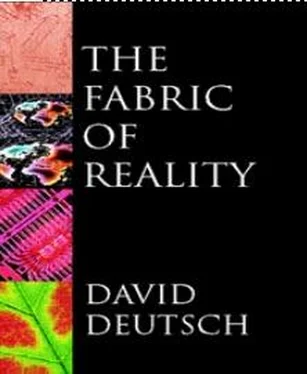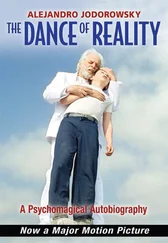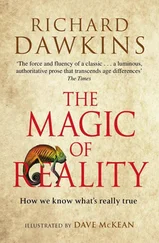David Deutch - The Fabric of Reality
Здесь есть возможность читать онлайн «David Deutch - The Fabric of Reality» весь текст электронной книги совершенно бесплатно (целиком полную версию без сокращений). В некоторых случаях можно слушать аудио, скачать через торрент в формате fb2 и присутствует краткое содержание. ISBN: , Жанр: Физика, Философия, на английском языке. Описание произведения, (предисловие) а так же отзывы посетителей доступны на портале библиотеки ЛибКат.
- Название:The Fabric of Reality
- Автор:
- Жанр:
- Год:неизвестен
- ISBN:0-7139-9061-9
- Рейтинг книги:4 / 5. Голосов: 2
-
Избранное:Добавить в избранное
- Отзывы:
-
Ваша оценка:
- 80
- 1
- 2
- 3
- 4
- 5
The Fabric of Reality: краткое содержание, описание и аннотация
Предлагаем к чтению аннотацию, описание, краткое содержание или предисловие (зависит от того, что написал сам автор книги «The Fabric of Reality»). Если вы не нашли необходимую информацию о книге — напишите в комментариях, мы постараемся отыскать её.
The Fabric of Reality — читать онлайн бесплатно полную книгу (весь текст) целиком
Ниже представлен текст книги, разбитый по страницам. Система сохранения места последней прочитанной страницы, позволяет с удобством читать онлайн бесплатно книгу «The Fabric of Reality», без необходимости каждый раз заново искать на чём Вы остановились. Поставьте закладку, и сможете в любой момент перейти на страницу, на которой закончили чтение.
Интервал:
Закладка:
Nevertheless, the feasibility of virtual reality may seem an uncomfortable fact for those of us whose world-view is based on science. Just think what a virtual-reality generator is, from the point of view of physics. It is of course a physical object, obeying the same laws of physics as all other objects do. But it can ‘pretend’ otherwise. It can pretend to be a completely different object, obeying false laws of physics. Moreover, it can pretend this in a complex and autonomous way. When the user kicks it to test the reality of what it purports to be, it kicks back as if it really were that other, non-existent object, and as if the false laws were true. If we had only such objects to learn physics from, we would learn the wrong laws. (Or would we? Surprisingly, things are not as straightforward as that. I shall return to this question in the next chapter, but first we must consider the phenomenon of virtual reality more carefully.)
On the face of it, Bishop Berkeley would seem to have a point, that virtual reality is a token of the coarseness of human faculties — that its feasibility should warn us of inherent limitations on the capacity of human beings to understand the physical world. Virtual-reality rendering might seem to fall into the same philosophical category as illusions, false trails and coincidences, for these too are phenomena which seem to show us something real but actually mislead us. We have seen that the scientific world-view can accommodate — indeed, expects — the existence of highly misleading phenomena. It is par excellence the world-view that can accommodate both human fallibility and external sources of error. Nevertheless, misleading phenomena are basically unwelcome. Except for their curiosity value, or when we learn from them why we are misled, they are things we try to avoid and would rather do without. But virtual reality is not in that category. We shall see that the existence of virtual reality does not indicate that the human capacity to understand the world is inherently limited, but, on the contrary, that it is inherently unlimited. It is no anomaly brought about by the accidental properties of human sense organs, but is a fundamental property of the multiverse at large. And the fact that the multiverse has this property, far from being a minor embarrassment for realism and science, is essential for both — it is the very property that makes science possible. It is not something that ‘we would rather do without’; it is something that we literally could not do without.
These may seem rather lofty claims to make on behalf of flight simulators and video games. But it is the phenomenon of virtual reality in general that occupies a central place in the scheme of things, not any particular virtual-reality generator. So I want to consider virtual reality in as general a way as possible. What, if any, are its ultimate limits? What sorts of environment can in principle be artificially rendered, and with what accuracy? By ‘in principle’ I mean ignoring transient limitations of technology, but taking into account all limitations that may be imposed by the principles of logic and physics.
The way I have defined it, a virtual-reality generator is a machine that gives the user experiences of some real or imagined environment (such as an aircraft) which is, or seems to be, outside the user’s mind. Let me call those external experiences. External experiences are to be contrasted with internal experiences such as one’s nervousness when making one’s first solo landing, or one’s surprise at the sudden appearance of a thunderstorm out of a clear blue sky. A virtual-reality generator indirectly causes the user to have internal experiences as well as external ones, but it cannot be programmed to render a specific internal experience. For example, a pilot who makes roughly the same flight twice in the simulator will have roughly the same external experiences on both occasions, but on the second occasion will probably be less surprised when the thunderstorm appears. Of course on the second occasion the pilot would probably also react differently to the appearance of the thunderstorm, and that would make the subsequent external experiences different too. But the point is that although one can program the machine to make a thunderstorm appear in the pilot’s field of view whenever one likes, one cannot program it to make the pilot think whatever one likes in response.
One can conceive of a technology beyond virtual reality, which could also induce specified internal experiences. A few internal experiences, such as moods induced by certain drugs, can already be artificially rendered, and no doubt in future it will be possible to extend that repertoire. But a generator of specifiable internal experiences would in general have to be able to override the normal functioning of the user’s mind as well as the senses. In other words, it would be replacing the user by a different person. This puts such machines into a different category from virtual-reality generators. They will require quite different technology and will raise quite different philosophical issues, which is why I have excluded them from my definition of virtual reality.
Another type of experience which certainly cannot be artificially rendered is a logically impossible one. I have said that a flight simulator can create the experience of a physically impossible flight through a mountain. But nothing can create the experience of factorizing the number 181, because that is logically impossible: 181 is a prime number. (Believing that one has factorized 181 is a logically possible experience, but an internal one, and so also outside the scope of virtual reality.) Another logically impossible experience is unconsciousness, for when one is unconscious one is by definition not experiencing anything. Not experiencing anything is quite different from experiencing a total lack of sensations — sensory isolation — which is of course a physically possible environment.
Having excluded logically impossible experiences and internal experiences, we are left with the vast class of logically possible, external experiences — experiences of environments which are logically possible, but may or may not be physically possible (Table 5.1). Something is physically possible if it is not forbidden by the laws of physics. In this book I shall assume that the ‘laws of physics’ include an as yet unknown rule determining the initial state or other supplementary data necessary to give, in principle, a complete description of the multiverse (otherwise these data would be a set of intrinsically inexplicable facts). In that case, an environment is physically possible if and only if it actually exists somewhere in the multiverse (i.e. in some universe or universes). Something is physically impossible if it does not happen anywhere in the multiverse.
I define the repertoire of a virtual-reality generator as the set of real or imaginary environments that the generator can be programmed to give the user the experience of. My question about the ultimate limits of virtual reality can be stated like this: what constraints, if any, do the laws of physics impose on the repertoires of virtual-reality generators?
Virtual reality always involves the creation of artificial sense-impressions — image generation — so let us begin there. What constraints do the laws of physics impose on the ability of image generators to create artificial images, to render detail and to cover their respective sensory ranges? There are obvious ways in which the detail rendered by a present-day flight simulator could be improved, for example by using higher-definition televisions. But can a realistic aircraft and its surroundings be rendered, even in principle, with the ultimate level of detail — that is, with the greatest level of detail the pilot’s senses can resolve? For the sense of hearing, that ultimate level has almost been achieved in hi-fi systems, and for sight it is within reach. But what about the other senses? Is it obvious that it is physically possible to build a general-purpose chemical factory that can produce any specified combination of millions of different odoriferous chemicals at a moment’s notice? Or a machine which, when inserted into a gourmet’s mouth, can assume the taste and texture of any possible dish — to say nothing of creating the hunger and thirst that precede the meal and the physical satisfaction that follows it? (Hunger and thirst, and other sensations such as balance and muscle tension, are perceived as being internal to the body, but they are external to the mind and are therefore potentially within the scope of virtual reality.)
Читать дальшеИнтервал:
Закладка:
Похожие книги на «The Fabric of Reality»
Представляем Вашему вниманию похожие книги на «The Fabric of Reality» списком для выбора. Мы отобрали схожую по названию и смыслу литературу в надежде предоставить читателям больше вариантов отыскать новые, интересные, ещё непрочитанные произведения.
Обсуждение, отзывы о книге «The Fabric of Reality» и просто собственные мнения читателей. Оставьте ваши комментарии, напишите, что Вы думаете о произведении, его смысле или главных героях. Укажите что конкретно понравилось, а что нет, и почему Вы так считаете.












